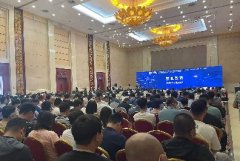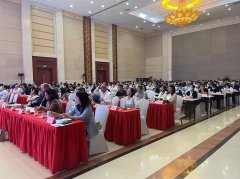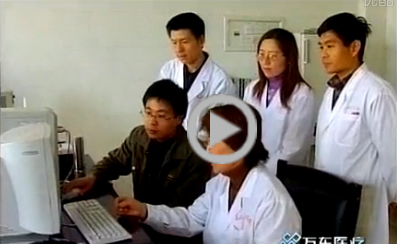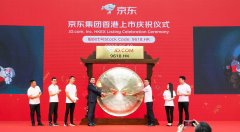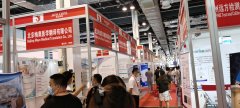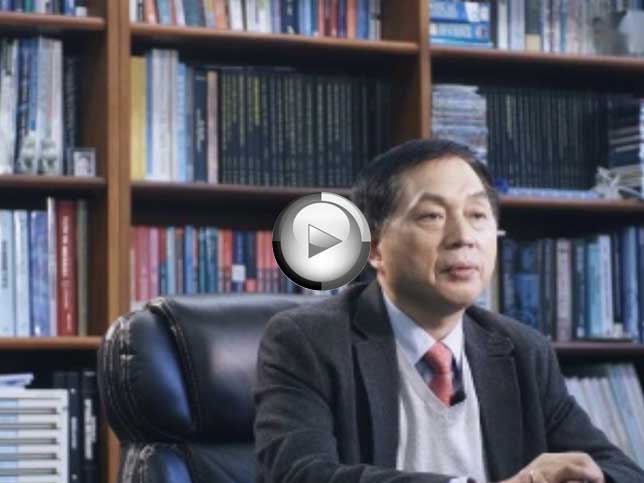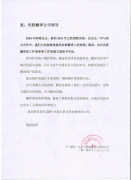上海翻译公司完成电力英文翻译
时间:2018-05-17 08:44 来源:未知 作者:dl 点击:次
上海翻译公司完成电力英文翻译

Abstract - The characteristics of upward leaders from transmission lines are crucial to the analysis of the shielding failure. However, since it is difficult to be captured under natural circumstance, experiments are needed. In this paper, the 7 m plane/rod to conductor and plane/rod to ground wire long air gap have been used for studying the characteristics of upward leader from ground wire and conductor, and the upward leader characteristics between them in initial stage were compared. The experimental results showed that the streamer and upward leader from ground wire incepted much earlier, but the difference of the velocity is small compared with that from conductor. These conclusions may suggest that the length of the upward leader from ground wire is longer than that from conductor, and this condition may lead to the ground wire struck by lightning more often compared with the conductor when no operation voltage was applied.
Index Term — lightning shielding failure; upward leader; transmission line, leader progression model; simulation experiment I.
In 1970s, electro-geometric method (EGM) was proposed by Armstrong and Whitehead for analyzing the probability of lightning strikes the transmission lines [3-4]. This method assumes that the exposed zone of an object is decided by striking distance and the object will be struck if the downward leader attaches its exposed zone first. Striking distance is related to the return-stroke currents [5] and it is assumed as the same for ground wire, conductor and ground in A-W model. Many researchers, such as Love et al., [6] Mousa et al., [7] Anderson et al., [8] TEPCO [9] and Grzybowski [10], have contributed much effort to the striking distance because it is the key parameter of EGM. Compared with using the same striking distance, different striking distance equations have been proposed so far. These studies suggested that the striking distance not only related to current but also related to other factors, such as the height of transmission lines from the ground, the operation voltage and so on. In the early 1990s, in order to find the stroke attachment point to the overhead line, Dellera and Garbagnati [11] proposed the leader progression model (LPM) for simulating the route of the downward lightning leader and an upward connecting leader. This model is based on the long air gap discharge results reported by the Les Renardieres group, hence, it can model the breakdown phenomena more physically. Meanwhile, Rizk also presented a similar model based on his own data on long air gap discharges [12]. In this model, the space potential criteria for upward leader inception and the method for calculating the potential of the upward leader tip have been proposed. A more detailed simulation of upward leader inception from grounded structures was made by Aleksandrov [13-14]. They analyzed the influence of electrode sizes on the attraction of lightning, the results of which correspond to the concept of a critical radius in long air gap discharges. Their model exhibits good efficiency for calculating the electric fields around symmetric electrodes such as vertical rods. However, the scale of the calculation complexity increases significantly of the electric field around the bundled conductors, which makes it a little difficult in the calculation of the lightning trip rate of transmission lines. In recent years, Cooray and Marley have contributed to a self-consistent leader progression model and analyzed the probability of lightning strokes to buildings using their model [15]. However, further development is still required to improve the LPM, particularly related to its basic assumptions. Hence, the CIGRE WG 33.01.03 suggested the following improvements to the LPM: 1) physical evaluation of the inception of upward leaders, 2) determination of the leader velocities, 3) determination of the validity of parameters directly taken from laboratory experiments, 4) modeling the charge distribution along a downward leader channel, and 5) modeling the ambient electric field under a thundercloud [16]. According to all above, the inception criteria and progression characteristics of upward leaders are crucial for studying the lightning shielding failure. And shielding failure is usually the competition between the upward leader from ground wire and conductor. Hence, in this paper, an experimental system was established in order to study the difference of upward leader between them. The characteristics of the upward leader were observed with a high-speed CCD camera and an impulse current measurement system. Finally, the influence of different structures on the inception time, velocity, input charge and length of the upward leader were studied in detail, and some interesting results were acquired.上海翻译公司完成电力英文翻译 II. The design of the Experimental systemA. The Setup of the Experimental SystemThe experiment was implemented at the UHV National Engineering Laboratory, Kunming, China, where the altitude is 2100 m. The layout of this experiment is shown in figure 1. The plate/rod electrode was connected to a 7200 kV impulse generator, and the ground wire/conductor was connected to the ground by cascading a current senor between them. The air gap is 7 m and the height of ground wire/conductor from ground is 15.5 m. The dimension of ground wire/conductor is shown in Table I.Fig. 1. The diagram of the experiment: (a) plane/rod to ground wire air gap and (b) plane/rod to 6-bundled conductor air gap Table.I Dimensions of conductors and ground wire
Fig. 2. The arrangement of the high voltage electrode and (a) the conductor (b) the ground wire in the test yard. B. Design of the ElectrodeA rod is usually adopted as the high-voltage electrode in lightning shielding failure simulation tests because the path of discharge can be predicted. In addition, it can simulate the non-uniform electric field between the downward leader and transmission lines. However, when negative switching voltages are applied to the rod electrode, the electric field induced around the conductor is too weak for the upward leader inception. So, this electrode is not adopted in our experiment.For this reason, a plane/rod (PR) electrode which is shown in figure 3 was proposed and the effect of this structure was verified by using finite element method. For a 7 m rod-conductor gap, while the potential of the electrode was 3000 kV, and that of the 6-bundled conductor was 0 V. The electric field intensity in the region of the critical radius around the conductor is shown in figure 4. The field varied with the development of 20 kA downward leader, which calculated by the method proposed in reference [11], is also shown in figure 4. Compared with the rod electrode in figure 4, plane/rod electrode can provide a bigger electric field which is similar to the condition for natural circumstance. Thus, a plate/rod electrode was adopted in our experiment to simulate the electric field around the conductor under a real lightning downward leader. Fig. 3. Structure of the plate/rod electrode. Fig. 4. Comparison of the electric field around the conductor caused by rod electrode and plane/rod electrode at an altitude of 2100m. The height of the lightning downward leader tip is 150 m at initial time. C. The Equivalence analysis of the ExperimentIn order to simulate the circumstance of upward leader at the initial stage, there are two requirements must be satisfied. The first is the variation of electric field around the conductor, and the second is the spatial distribution of the electric field.For the first term, it can be adjusted by regulating the warefront time. After some calculations [17], the variation due to 10-30 kA real lightning current is about 7-26 kV/m/μs, and the variation is about 7.5-20 kV/m/μs for applying a 1500-4000 kV impulse with wavefront 200 μs to the electrode. So, the 200/2000 μs waveform was used in our experiment. Second term is mainly decided by the structure of the electrode. So, a circular plate with a diameter of 8 m was selected here, and the equivalence was illustrated by calculating the electric potential distribution. In this calculation, the height of ground wire is 15.5 m. The lightning current is 16 kA and the height of downward leader tip from ground is 200 m. The potential of electrode is 884 kV and the distance of air gap is 7 m. The potential for lightning and experiment case is calculated by using LPM method proposed in reference [11] and finite element method respectively. The result is shown in figure 5. Fig. 5. The distribution of potential along with the air gap. In figure 5, the equivalence of potential along with the air gap performs well from the height of 15.5 m to 19.83 m, and the equivalence is not so good near the electrode. This condition verified the design of our experiment can simulate the initial stage of upward leader. D. Design of the Impulse Current Measurement DeviceThe current measurement device is in series with the path of the current flow. After flowing through the outside of the metal barrel, the current will flow to the coaxial shunt or the protection device. The coaxial shunt is connected to an acquisition card (100 MS/s Digitizer), which is used to sample the voltage signal produced by the coaxial shunt. The protection device is used to limit the current flows to the coaxial shunt. A multimode fiber transmission system is attached to the acquisition card and used to transmit the signal to the low-voltage side. The resistance of the coaxial shunt is 1.8 mΩ to 0.1 Ω, and it can measure the current up to 100 kA. Protection devices are equipped to clamp the output voltage of the coaxial shunt.III Experimental ResultsA. Analysis of the Discharge Images and the Current Measurement ResultsBased on the experimental system illustrated in the above section, 3208 kV negative impulse was applied to the electrode. And the experiment was repeated 112 times in total. One of the typical discharge pictures for conductor and ground wire is illustrated in figure 6 and figure 7.The photographs shown in figure 6 and figure 7 were taken with a PHANTOM V12 high-speed CMOS camera with a maximum frame rate of 1,000,000 fps. The parameters of the high speed CMOS camera were set as 130 kfps frame rate, 128 × 256 pixel resolution, and 7.8 μs shutter speed here. Only the photographs after the inception of upward discontinuous leader are presented here because the discharge process before that is too dark for observation at a distance of 50 m. The current measurement system and the voltage measurement system were connected to the camera by a synchronous-trigger system. When a trigger signal occurred, the current and voltage of the discharge process were collected.. Figure 6 shows clearly that the upward leader propagated from the ground wire to the plate/rod electrode. In this discharge, the streamer incepted from the conductor at 26.5 μs but streamer is too dark to be observed in the graph at 32.9μs. After about 8 μs, the discontinuous leader emerged at 34.2 μs. Correspond with this inception, some luminous spots were observed in the graph at 41.2 μs. These spots were the transited zone from streamer to leader. Afterwards, these spots became longer (about 0.13 m) but darker in the photograph at 49.5 μs and completely disappeared in the photographs at 57.8 μs to 66.2 μs. This process is called dark period and mainly due to the chocking effect caused by space charge. The luminous spots appeared again at 74.5 μs and this refers the continuous leader started again. At this moment, the length of upward leader is about 0.27 m. The upward leaders propagated along a stable channel, with its development, some other leaders disappeared. At 116.1 μs, the tips of the downward and upward streamers met with each other, and the whole air gap broke down.
Fig. 6. The photos of an upward leader initiated from the ground wire.
Fig. 7. The photos of an upward leader initiated from the conductor.
Figure 7 shows the discharge process of upward leader from conductor. It is similar to that of ground wire. One phenomenon to be noted here is that the process of discontinuous leader wasn’t observed sometimes in this experiment. In this discharge, the upward streamer incepted at 36.1 μs and it is about 10μs later than that from ground wire. The continuous leader emerged at 116.3 μs and the gap is breakdown at 170 μs finally.
The discharge current was also obtained during the experiment, as shown in figure 8. In figure 8, the black line and red line represents the current measured from ground wire and conductor, respectively. All the capacitive current was subtracted from the total measured current [17]. Corresponding with the photographs in figure 6 and figure 7, the corona current pulse always accompanied an illumination of a streamer or a leader. The corona current pulse due to the upward streamer and leader from conductor always has a bigger value compared with that from ground wire. But the average value of pre-breakdown current from conductor is smaller. Some high frequency oscillation can also be observed in the waveform, it may be due to the electric circuit and the maximum frequency response of coaxial shunt. Fig. 8. The measured streamer and leader current B. The inception time of upward streamerThe statistical data on the inception times of the streamer, the discontinuous leader, and the continuous leader as well as the time interval between the streamer and the continuous leader are given in table II.
TABLE II
The inception time of the streamer and the upward leader with different impulse voltages
In table II, the inception time of upward streamer from ground wire and conductor was approximately 26.2 μs and 35.9 μs when 3208 kV impulse was applied. This result clearly shows that the inception time of upward streamer from ground wire is earlier and it is mainly due to the stronger electric field around the ground wire. For the inception of positive streamer, Gallimberti [18] has provided a criterion as equation (1). (1) where refers to the number of free electrons. and refers to the ionization coefficient and attachment coefficient respectively. Equation (1) means the number of free electrons must exceed a critical number for the inception of streamer. Compared with conductor, the electric field around ground wire is bigger. This condition makes more free electrons existing in the region around the ground wire and equation (1) can be satisfied more easily. This is an advantage for forming electron avalanches. If one of avalanche can self-propagate, a streamer incepts. So, the inception of upward streamer from ground wire is easier. C. The process of steamer-leader transitionIn table II, the inception time of discontinuous leader from ground wire and conductor was approximately 39.7 μs and 106.9 μs. This result clearly shows that the upward streamer can transit to the discontinuous leader easier from the ground wire.Analyzing the discharge current in figure 8, a single corona pulse can be found before the inception of upward leader from conductor and the peak value is up to 5A (part A). In the ground wire case, more than one corona pulse is observed but the peak value of these pulses is much smaller (part B). For analyzing this difference, studying the process of steamer-leader transition is needed. In the model proposed by Gallimberti[18], the structure of the transition area is assumed as a cylinder, and the temperature of this area is heated up by the energy due to the current through the area. When the temperature (T) is higher than 1500K, the transition process is completed and the discontinuous leader incepts. The relationship between the current and the temperature can be expressed as (2) where is the translation energy corresponding to the temperature(T). , , are coefficients. is the time constant for vibrational relaxation and varied with the temperature. All these value can be obtained in Ref [18]. For a given corona pulse current, the variation of temperature with time can be calculated as figure 9 and 10. In this calculation, the radius of the transition area is assumed as 0.1 mm. In figure 9, only the current due to the big corona pulse is enough to make the temperature of transition area exceed 1500K at about 114.1μs and completed the transition process. Therefore, the discontinuous upward leader (the same as the continuous leader in this case) incepted at about 2 μs later. For ground wire case which is shown in figure 10, the temperature of transition area only can reach to about 500K after the injection of the corona pulses at 27 μs, so the discontinuous upward leader does not incept until the subsequent corona pulses heat up the area and make the temperature exceed 1500 K. In the whole process, about 1.01 μC and 3.64 μC space charge was injected totally into the transition area for conductor and ground wire case respectively. These two discharge modes occupy about 80% of our experiments and this difference is mainly due to the different electric field around the conductor and ground wire. For ground wire case, the bigger surface electric field can make the streamer incept earlier but the streamer is hard to develop as the electric field is much weaker at a distant. Comparatively speaking, the surface electric field of conductor is much smaller but electric field around conductor is more uniform than the condition of ground wire. When the surface is enough for the inception of streamer, the streamer develops easier in this case because the electric is also strong at a distant. Therefore, more charges will be injected into the conductor continuously. Therefore, the big corona pulse is observed instead of a series of small pulses. Actually, some small pulses and discharge current are observed from the conductor before the appearance of the big corona pulse and these is mainly contributed by some streamers and corona, which is too dark for observing. Therefore, the current amplitude of the pulses mentioned above may be a little bigger than the real value. According to our experiments, the average input charge for the inception of discontinuous leader from ground wire and conductor was approximately 1.13 μC and 4.81 μC respectively. From the previous research in rod-plane gap, more input charge was needed for the inception of discontinuous leader when an electrode with bigger curvature radius was used in rod-plane gap [21]. This conclusion may verify our experimental result. Bundled-conductor is a technical method for increasing the curvature radius. Hence, considering the radius of our sub-conductor equal to the radius of ground wire, the curvature radius of conductor is bigger than that of ground wire. So, more input charge should be needed for the inception of discontinuous leader from bundled conductor. And this may explain why the discontinuous leader incepted from the ground wire earlier. Fig. 9. The discharge current (conductor) of part A in figure 8 and the temperature corresponding to the current Fig. 10. The discharge current (ground wire) of part B in figure 8 and the temperature corresponding to the current D. The inception time of continuous upward leaderIn table II, the inception time of continuous leader from ground wire and conductor was approximately 68.2 μs and 114.1 μs. This result shows that the continuous leader incepts earlier from ground wire, too. And this result can also be explained by using leader progression model (LPM) with critical radius [11]. In the LPM model, the charge of thundercloud is 8 C. The velocity of downward leader is set as 2×105 m/s and it start at the height of 2000 m. The uniform distribution of charge in downward leader was used. The relationship between charge and current can be expressed as following.(3) where Q is the total charge of the downward leader and I is the lightning current. The critical radius of sub conductor and ground wire is 3 cm and 10 cm respectively. The calculation result is shown in figure 11. The red lines and black line represents the height of downward leader tip from ground when the continuous upward leader incepted from ground wire and conductor respectively. As the velocity downward leader has been assumed as 2×105 m/s, the difference of inception time, which has been represented by blue line, can be calculated by equation (4). (4) where refers to the height of downward leader tip when the upward leader incepts from ground wire and refers to that from conductor. is equal to 2×105 m/s. The height of conductor and ground wire is 15.5 m from the ground. Fig. 11. The height of downward leader tip when the upward leader incepted and the difference of inception time between ground wire and conductor. In figure 11, the calculation results shows that the continuous leader incepts from ground wire earlier when the lightning current is from 15 kA to 35 kA. And this comes to the same conclusion as our experiment results. In our experiment, the electric field on the surface of the conductor and ground wire was calculated to be equal to the electric field of a 30 kA lightning downward leader at approximately 200 - 300 m in height [17]. The difference of inception time from our calculation is about 30 μs, and which is smaller compared with our experimental result (44 μs). As the critical radius was acquired in the typical conductor-plane air gap, whether this criterion is suitable for direct using in LPM should be considered. And this may suggest that the critical radius criterion probably underestimate the influence due to the different structure of ground wire and conductor. E. The velocity of upward leaderThe velocity during the propagation of the upward leader is shown in figure 12.Fig.12. The velocity of upward leader from ground wire and conductor (Points for measurement results and lines for calculated results). In figure 12, red points and black points represent the velocity of upward leader from ground wire and conductor respectively. Both of them increase with the development of upward leader. When the length of upward leader is smaller than 0.4 m, the velocity is about 0.6-1.4 cm/μs. While the length is about 1 m, the velocity can reach about 3 cm/μs. The average velocity can be obtained by averaging the data in figure 12. The average value was approximately 2.06 cm/μs and 1.78 cm/μs for ground wire and conductor respectively. Compared the velocity of upward leader from ground wire with that from conductor, it is bigger from ground wire at the beginning. But they are almost the same when the length of leader channel is longer than 0.6 m. The velocity can also be obtained by using the model which proposed by Marley and Cooray [15]. In this model, based on the experimental result under rod-plane gap, 1 μC was used as the criterion for the inception of upward leader. Based on our experimental results, 1.13 μC and 4.81 μC were selected as the criterion for leader incepted from ground wire and conductor. The lightning current is equal to 30 kA and the height of ground wire and conductor from ground is equal to 15.5 m. In addition, a simplified procedure was used for calculating the corona charge. This is based on the assumption that the total corona charge can be determined from the difference between the geometrical potential distribution and the potential distribution after the corona formation . So, the equation (5) will be obtained. (5) where is the geometrical factor and it is equal to C/V·m . The calculation result is shown in figure 12. It shows that the velocity increase with the development of upward leader and this condition is similar to the experimental result. When the upward leader develops, the distance between downward and upward leader tip becomes shorter and this will make the ionization process of upward leader tip stronger. More charge will be injected into the leader channel and the energy which provided by this charge will accelerate the formation of leader channel. Compared the calculation result of ground wire with conductor, they are almost the same. And this tendency is similar to the experimental result when the length of leader channel is longer than 0.6 m. When the upward leader just incepts, the velocity of upward leader from ground wire is faster based on our experimental result. But it’s almost the same in the calculation result. This maybe mainly due to the value selection of . In our calculation, this value is constant but it should be change with the development of upward leader. Marley has proposed this value can be calculated by using charge simulation method [15]. Actually, some discharge process should also be considered, such as choking effect due to space charge, the shape of corona zone. All these factors will influence the simulation and make the difference between the experimental and the calculation results. IV Comparison of the upward leader performance between the ground wire and conductor in transmission linesAccording to the results in section III, the velocity increases with the development of upward leader. And this increasing rate is about 0.012 μs-1 from the curve fitting of data in figure 12. Assuming increasing rate keeps a constant and it is the same for the upward leader from ground wire and conductor, the length of upward leader can be calculated by equation (6)(6) where refers to the time interval for each step. In our experiment, the upward leader from ground wire incepts earlier (44 μs) when ground wire and conductor is placed at the same height. Combine this result with the equation (6), the minimum difference of striking distance of ground wire and conductor can be estimated. In this calculation, the initial velocity of upward leader (1 cm/μs for ground wire and 0.5 cm/μs for conductor), the initial length of upward leader (5 cm) and the time interval (0.1 μs) were selected. The length of the upward leader from ground wire and conductor under 30 kA lightning is shown in figure 13. Fig.13. The length of upward leader from ground wire and conductor when the lightning current is equal to 30kA. From the observation data in Japan, the length of upward leader before final jump is about 25-125 m for a tower with 140 m height [22]. The length is about 97 to 121 m for a tower with 121 m height in South Dakota [23] and about 10.9 to 113 m for the buildings with 25 to 90 m height in China [24]. According to these results, most of upward leaders from transmission lines are longer than 10 m. Combined these facts and the calculation result, the length of upward leader from ground wire may be at least 7 m longer than that of conductor before the final jump, and this difference increases with a longer upward leader. Actually, the method proposed above probably underestimated the difference. Considering the height of ground is higher than the conductor in transmission lines, the difference of inception time is probably larger than 44 μs. In addition, the space charge due to the upward leader emerging from ground wire will also make the inception of upward leader from conductor more difficult. All these facts will make the difference of upward leader length between ground wire and conductor much bigger. V ConclusionsIn this paper, an experimental system was established to study the characteristics of upward leader from ground wire and conductor. After more than 100 tests, some conclusions can be put forward as following.1) An experimental system, with 7 m plane/rod to conductor and plane/rod to ground wire long air gap, has been established in order to study the inception criteria and progression characteristics. The equivalence between this system and the natural lightning condition performs well from the height of 15.5 m to 19.83 m. 2) From our experimental result, the upward streamer, discontinuous leader and continuous leader from ground wire incepts earlier than that from conductor. The difference of velocity at the beginning is big, but they are almost the same when the leader channel is longer than 0.6 m. This tendency is similar to the calculation results. 3) Single big corona pulse is observed in the discharge current from conductor and the space charge it injected into the transition area is enough for the inception of discontinuous leader. For the ground wire case, the charge of a small corona pulse is small, so a series of corona pulses are needed to heat up the transition area and make the discontinuous leader incepts. 4) The earlier inception time makes ground wire has a bigger exposed zone. For a 30 kA lightning, the striking distance of ground wire is estimated at least 7 m longer than that of conductor, and this value is probably an underestimated value. Considering the height difference of ground wire and conductor and charge shielding of ground wire, this difference should be bigger.
Manuscript received September 10, 2012. This work was supported by National Basic Research Program of China under Grant 2011CB209403.
The authors are with the State Key Lab of Power System, Department of Electrical Engineering, Tsinghua University, Beijing 100084, China (e-mail: zengrong@tsinghua.edu.cn ). |





